
Brought to you by:
Enterprise Strategy Group | Getting to the Bigger Truth™
ESG TECHNICAL VALIDATION
IBM Watson Studio on IBM Cloud Pak for Data
Operationalizing AI/ML and Automating Lifecycle Management for ModelOps
By Tony Palmer, Senior Validation Analyst
AUGUST 2021
ESG Technical Validations
Introduction
Background
Timeframe of Deploying a Model
Figure 1. Time to Deploy a Model into Production
How long does it typically take your organization to go from trained model to being deployed into production? (Percent of respondents, N=146)
Source: Enterprise Strategy Group
IBM Watson Studio on IBM Cloud Pak for Data
Figure 2. IBM Watson Studio—Build and Scale Trusted AI Across any Cloud
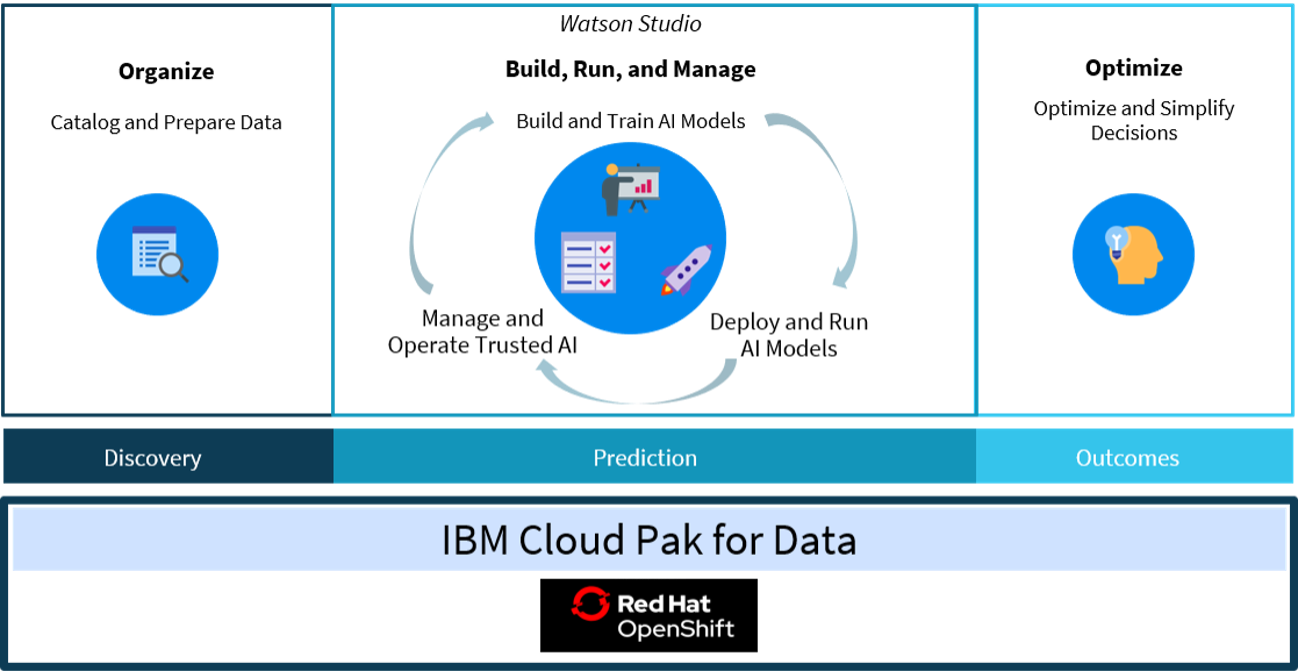
Source: Enterprise Strategy Group
Federated Learning
Table 1. Top Federated Learning Use Cases
| Use Case Name | Patient Analytics (Healthcare) | Fraud & Financial Crimes (Banking) | Predictive Maintenance & Quality (Manufacturing) |
|---|---|---|---|
|
Motivation to adopt federated learning |
Cannot freely share or pool patient data due to privacy policies Need more complex analysis data sets like medical images or data from medical sensors Data is also a valuable proprietary resource for pharma/healthcare organizations |
Strict data privacy rules, both for regulatory and competitive reasons Traditionally, banks use rule-based and manual efforts to detect fraud and risk, which is prone to human error Risky small and micro enterprise loans are an important rising indicator of bank success, without credit risk identification |
Largest amount of data from sensors/IoT devices on individual machines Data cannot be gathered fast enough in one place to do analysis Unscheduled machine outages are a top challenge that can derail the business |
Source: Enterprise Strategy Group
Figure 3. IBM Federated Learning—How it Works
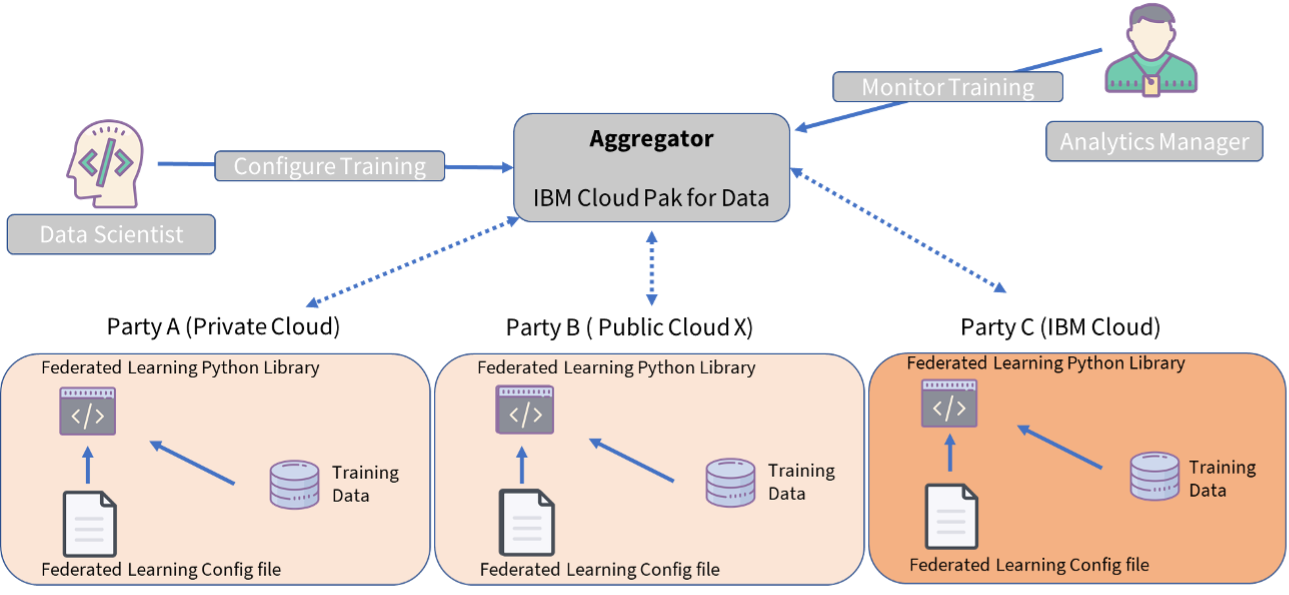
Source: Enterprise Strategy Group
ESG Technical Validation
Figure 4. IBM Watson Studio on IBM Cloud Pak for Data
Source: Enterprise Strategy Group
AutoAI
ESG Testing
Figure 5. AutoAI Experiment Settings in Watson Studio
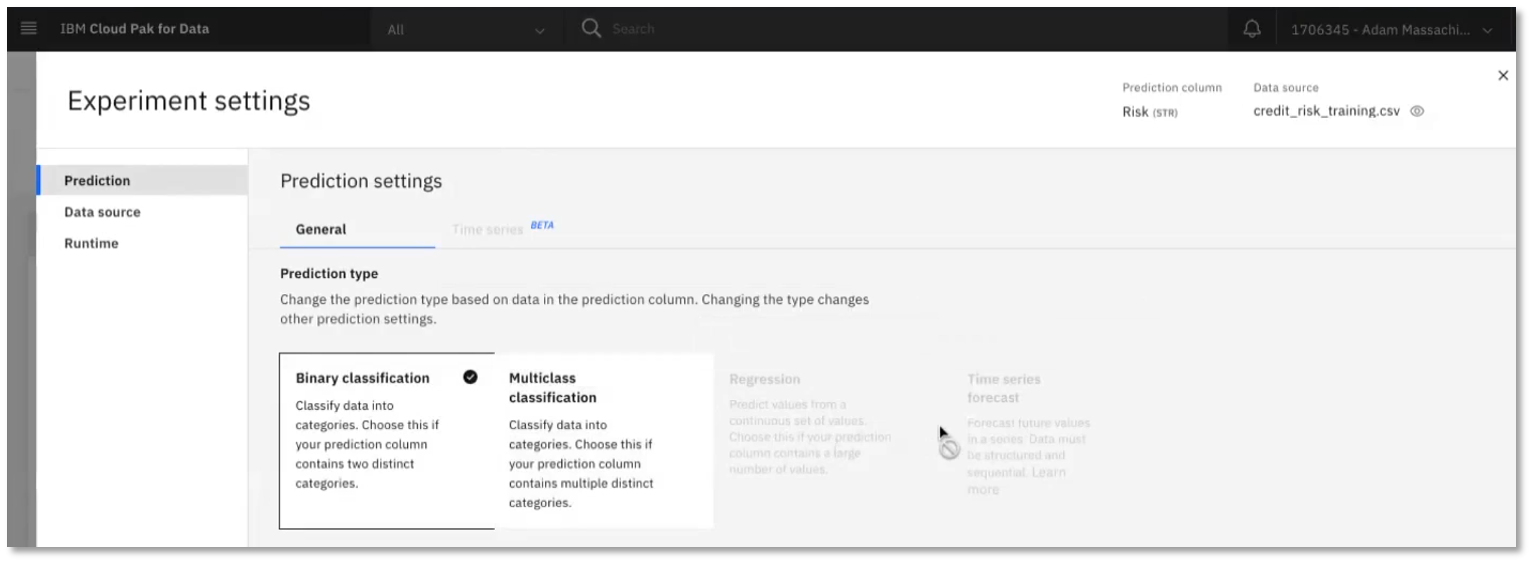
Source: Enterprise Strategy Group
Figure 6. AutoAI Relationship Map in Watson Studio
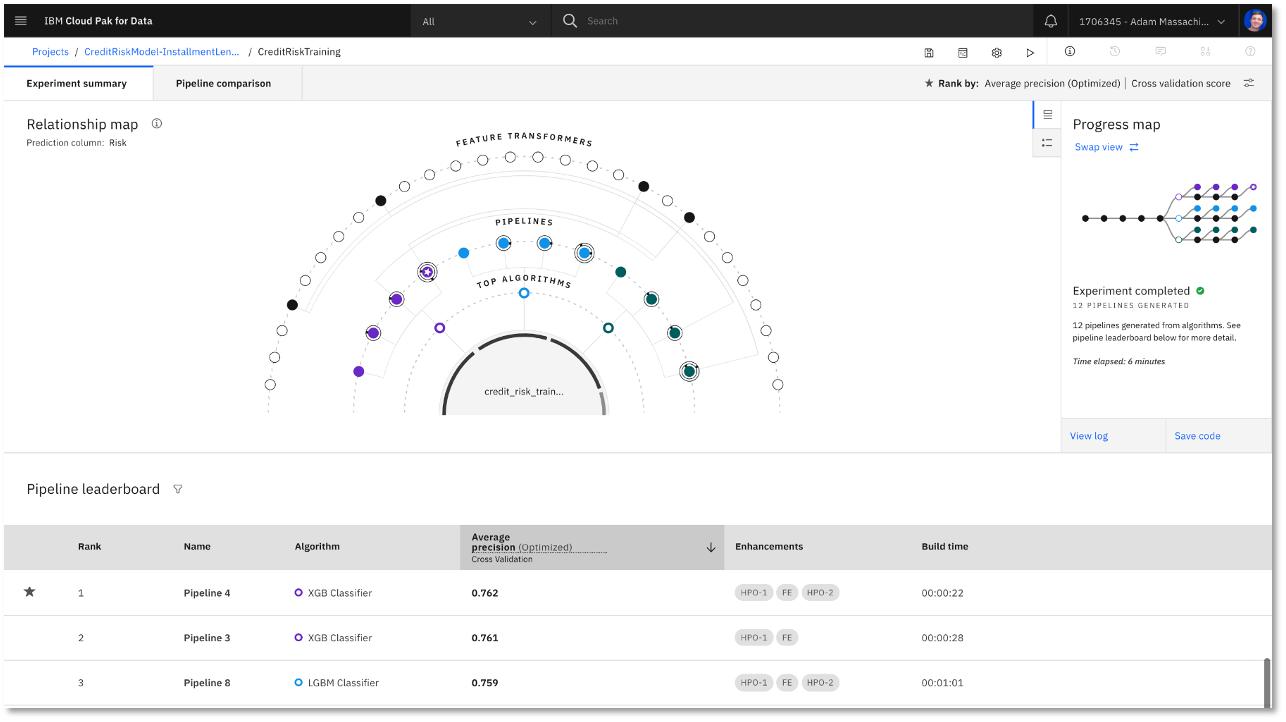
Source: Enterprise Strategy Group
Figure 7. AutoAI-generated Notebook in Watson Studio
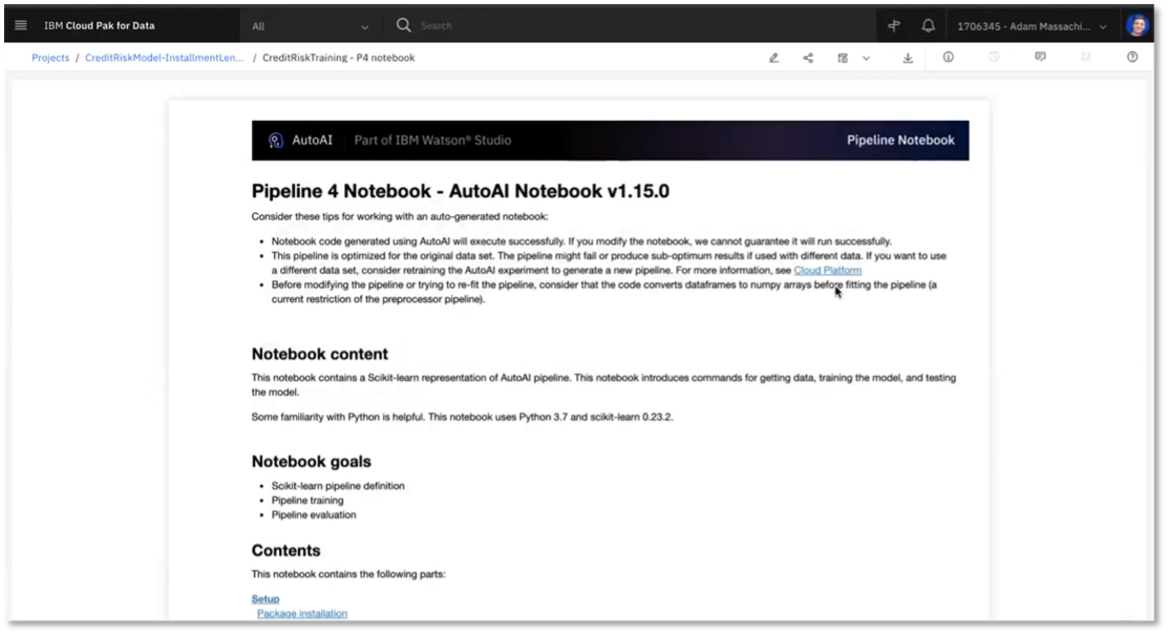
Source: Enterprise Strategy Group
Figure 8. Scikit-learn Definition Available for AutoAI-generated Notebook in Watson Studio
Source: Enterprise Strategy Group
Why This Matters
Trustworthy AI
ESG Testing
Figure 9. Model Insights Dashboard in Watson Studio

Source: Enterprise Strategy Group
Figure 10. Explainability in Watson Studio
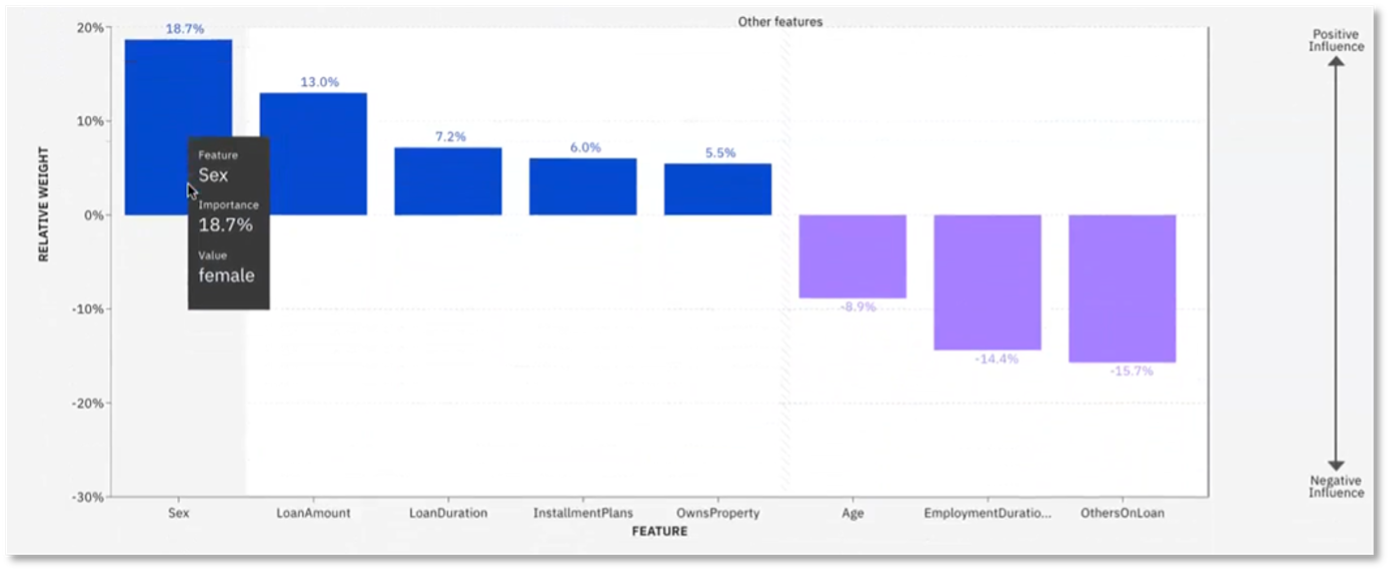
Source: Enterprise Strategy Group
Figure 11. Model Drift Monitor in Watson Studio
Source: Enterprise Strategy Group
Decision Optimization and Pipeline Builder
ESG Testing
Figure 12. Modeling Assistant with Decision Optimization in Watson Studio

Source: Enterprise Strategy Group
Figure 13. Visualization with Decision Optimization in Watson Studio
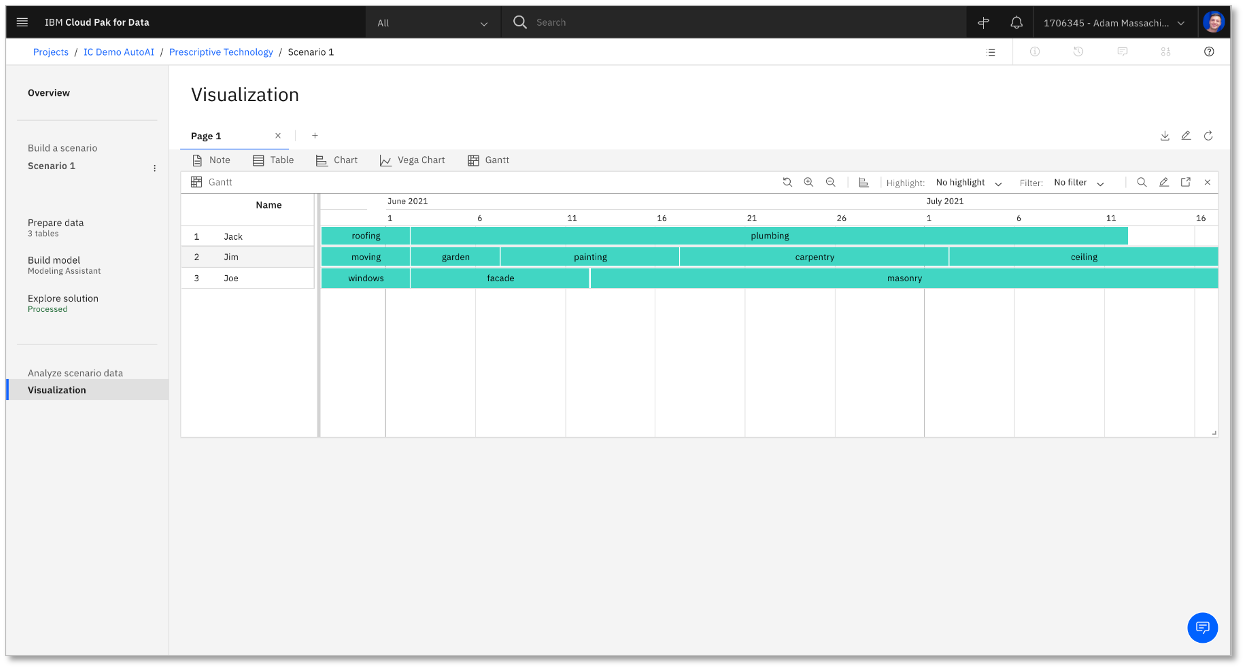
Source: Enterprise Strategy Group
Figure 14. Pipeline Builder in Watson Studio

Source: Enterprise Strategy Group
Why This Matters
The Bigger Truth
Automate the AI lifecycle for ModelOps.
This ESG Technical Validation was commissioned by IBM and is distributed under license from ESG.
1 Source: ESG Master Survey Results, Supporting AI/ML Initiatives with a Modern Infrastructure Stack, May 2021. All ESG research references and charts in this technical validation have been taken from this master survey results set, unless otherwise indicated.
2 Source: ESG Master Survey Results, Artificial Intelligence and Machine Learning: Gauging the Value of Infrastructure, Jan 2021.
3 Source: ESG Brief, Operationalizing AI: Time, Infrastructure Considerations, and Data Drift, Jan 2021.
All trademark names are property of their respective companies. Information contained in this publication has been obtained by sources The Enterprise Strategy Group (ESG) considers to be reliable but is not warranted by ESG. This publication may contain opinions of ESG, which are subject to change from time to time. This publication is copyrighted by The Enterprise Strategy Group, Inc. Any reproduction or redistribution of this publication, in whole or in part, whether in hard-copy format, electronically, or otherwise to persons not authorized to receive it, without the express consent of The Enterprise Strategy Group, Inc., is in violation of U.S. copyright law and will be subject to an action for civil damages and, if applicable, criminal prosecution. Should you have any questions, please contact ESG Client Relations at 508.482.0188.

Enterprise Strategy Group | Getting to the Bigger Truth™
Enterprise Strategy Group is an IT analyst, research, validation, and strategy firm that provides market intelligence and actionable insight to the global IT community.
